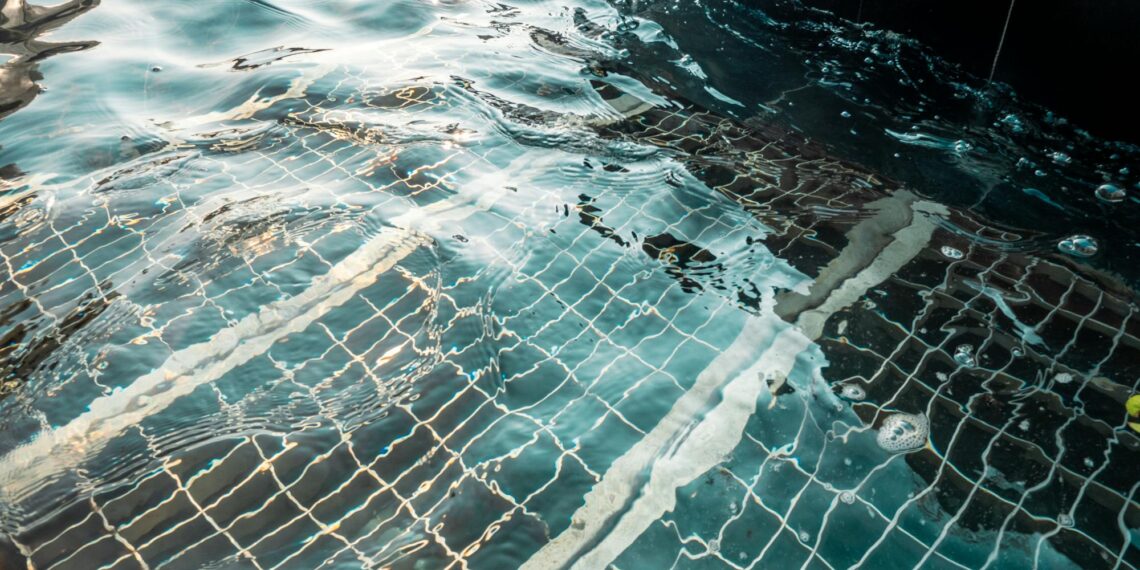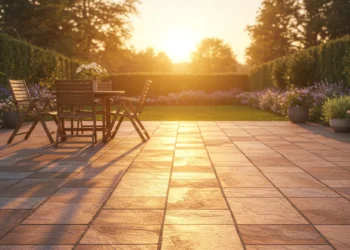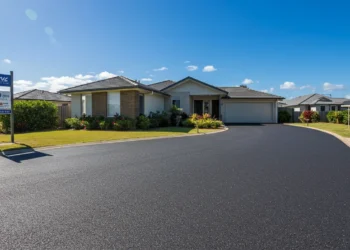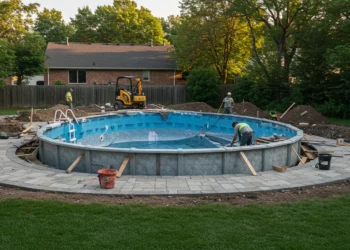Owning a fibreglass pool is a fantastic way to enhance your backyard and enjoy the Australian lifestyle. These fibreglass pools adelaide are durable, low-maintenance, and visually appealing, making them a popular choice among homeowners. However, keeping your fibreglass pool clean is essential to ensure it stays in top condition for years to come.
In this guide, we’ll walk you through essential pool cleaning tips, best practices, and common mistakes to avoid so your fibreglass pool remains pristine and ready for swimming all year round.
Why Proper Pool Cleaning is Crucial
Keeping your pool clean isn’t just about aesthetics—it directly impacts the water quality, the pool’s lifespan, and your health. Poor maintenance can lead to algae growth, cloudy water, and damage to the fibreglass surface. Regular cleaning and balanced water chemistry will help prevent costly repairs and keep your pool inviting.
The Fundamentals of Fibreglass Pool Cleaning
Skimming and Removing Debris
Leaves, insects, and dirt can quickly accumulate on the pool’s surface. Regularly skimming your pool helps prevent debris from sinking to the bottom, making it easier to maintain water clarity.
- Use a pool skimmer daily to remove floating debris.
- Empty skimmer baskets to ensure optimal water circulation.
- Trim nearby trees and plants to reduce falling leaves.
Brushing the Pool Surface
Fibreglass pools have a smooth gel coat that resists algae buildup, but they still need occasional brushing to prevent dirt and minor algae from sticking.
- Use a soft-bristle brush designed for fibreglass pools.
- Focus on steps, corners, and waterline areas, as they are prone to dirt accumulation.
- Brush at least once a week to maintain cleanliness.
Vacuuming the Pool
Dirt and fine particles can settle at the bottom of the pool. A good-quality automatic or manual vacuum will help remove debris that skimming and brushing might miss.
- Robotic pool cleaners are ideal for fibreglass pools and do most of the work for you.
- Manual vacuums can be used for targeted cleaning.
- Vacuum weekly or more frequently if you notice debris accumulation.
Water Chemistry and Balance
Checking and Adjusting pH Levels
Maintaining the correct pH level is crucial for swimmer comfort and preventing damage to the pool’s surface. The ideal range for a fibreglass pool is 7.2 to 7.6.
- Test pH levels twice a week using a pool test kit.
- Use pH increasers or reducers as needed to maintain balance.
- Avoid extreme pH fluctuations, as they can cause cloudy water and equipment damage.
Maintaining Chlorine Levels
Chlorine is essential for sanitising your pool and keeping bacteria and algae at bay. However, excessive chlorine can damage the fibreglass gel coat.
- Aim for a chlorine level of 1-3 ppm (parts per million).
- Consider saltwater chlorination for a gentler, low-maintenance alternative.
- Avoid dumping chlorine granules directly into the pool—always pre-dissolve them in water first.
Alkalinity and Calcium Hardness
Total alkalinity and calcium hardness help stabilise pH and protect the pool’s structure and equipment.
- Alkalinity should be between 80-120 ppm—use baking soda or alkalinity increaser if needed.
- Calcium hardness should be 200-400 ppm to prevent staining or etching of the gel coat.
- Test these levels monthly to ensure a stable environment.
Preventing and Managing Algae Growth
Routine Algae Prevention
Even though fibreglass pools are more resistant to algae than concrete pools, they are not completely immune. Warm water and unbalanced chemicals can encourage algae growth.
- Keep chlorine levels within the recommended range.
- Run your pool pump for at least 8 hours a day to maintain circulation.
- Shock the pool every 2-3 weeks, especially in summer or after heavy rainfall.
Dealing With Algae Infestations
If algae appear, act quickly to prevent it from spreading:
- Brush the affected areas to loosen the algae.
- Increase chlorine levels by shocking the pool.
- Run the filter continuously until the water clears.
- Use an algaecide for persistent outbreaks.
Filtration System Maintenance
Cleaning the Pool Filter
Your pool filter plays a vital role in keeping the water clean. Whether you have a cartridge, sand, or DE (diatomaceous earth) filter, regular cleaning is necessary.
- Cartridge filters should be rinsed every 2-4 weeks and replaced when worn.
- Sand filters need backwashing every few weeks.
- DE filters require occasional recharging with fresh DE powder.
Ensuring Proper Water Circulation
Good water circulation helps prevent dead spots where algae and debris can accumulate.
- Keep return jets directed towards the bottom of the pool.
- Ensure skimmer baskets and pump baskets are free of blockages.
- Run the pool pump for at least 8-12 hours a day, especially in hot weather.
Seasonal Pool Cleaning Tips
Summer Maintenance
During the warmer months, pool use increases, and so does the need for cleaning.
- Test the water more frequently (at least 3 times a week).
- Run the filter longer (10-12 hours daily) to manage higher chlorine demand.
- Shock the pool more often due to sunscreen, sweat, and organic matter buildup.
Winter Care for Fibreglass Pools
Even if you’re not swimming, your pool still needs attention in winter.
- Reduce filtration to 4-6 hours a day to save energy.
- Add a winter algaecide to prevent algae buildup.
- Use a pool cover to keep out debris and maintain water chemistry.
Common Pool Cleaning Mistakes to Avoid
Using the Wrong Cleaning Tools
- Avoid stiff-bristled brushes—they can damage the fibreglass gel coat.
- Don’t use harsh chemicals like acid washes, which can degrade the surface.
Ignoring Water Balance
- Skipping regular water testing can lead to scaling, staining, and equipment damage.
- Overusing chemicals can cause eye and skin irritation for swimmers.
Neglecting Filter Maintenance
- A clogged or dirty filter can lead to cloudy water and inefficient circulation.
- Always clean and replace filters as recommended by the manufacturer.
Final Thoughts
a fibreglass pool comes with many benefits, including low maintenance and durability, but regular cleaning is still essential. By skimming debris, brushing, vacuuming, maintaining water chemistry, and ensuring proper filtration, you can keep your pool in pristine condition year-round.
A well-maintained pool not only looks inviting but also enhances longevity, prevents costly repairs, and ensures a safe swimming experience for your family. Follow these cleaning tips, and you’ll enjoy crystal-clear water and endless summer fun in your fibreglass pool!








